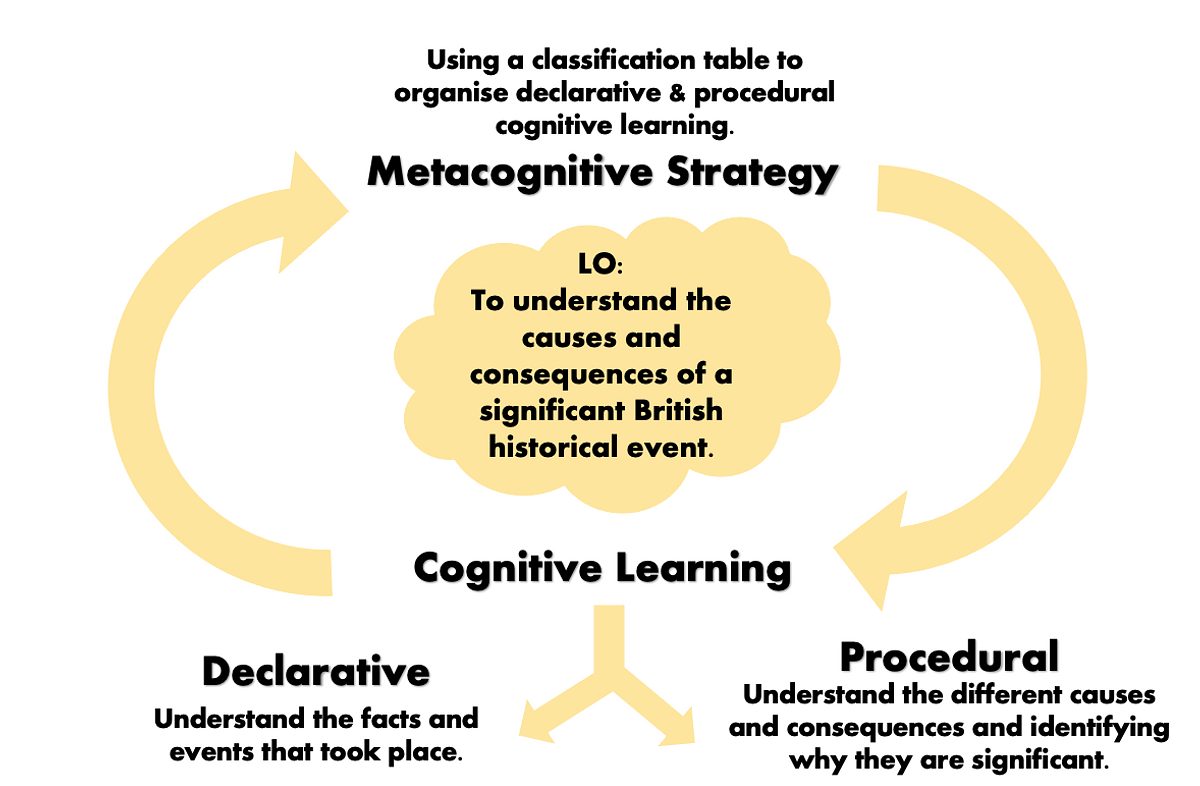
Research School Network: Metacognition in primary history Polly Crowther and Megan Pretious explore how graphic organisers can be used as a tool for mastering historical concepts.
—
Blog
Metacognition in primary history
Polly Crowther and Megan Pretious explore how graphic organisers can be used as a tool for mastering historical concepts.
Share on:

by East London Research School
on the
Polly Crowther, Evidence Lead in Education, together with Megan Pretious, Teacher and History and Geography Lead at Cobham Primary School, explore how graphic organisers can be used as a tool for mastering historical concepts.
The Education Endowment Foundation (EEF) report gives teachers recommendations on how to help students develop metacognition and self-regulation skills. Metacognition is a complex concept, especially when it is related to specific subjects. Teachers need to use metacognitive strategies that are specific to what they’re teaching. For primary teachers, who already have a lot to understand about each subject, it can be overwhelming to come up with effective metacognitive strategies for subjects like history.
In our school, we use graphic organisers as a practical way to teach metacognitive strategies in history. Graphic organisers help students organise and understand information. When students use them, they’re using higher-level thinking skills like analysing, synthesising, and evaluating information, which are important metacognitive skills. They also reflect on their thinking and learning process as they organise and rearrange information. So, using graphic organisers in history is a way to practise metacognition. They can come in different forms like flowcharts, concept maps, or Venn diagrams. In history, graphic organisers are especially helpful for students to understand how different events, people, and ideas are related to each other.

For example, you can use a timeline to see the order of events and how they are related. By creating a timeline, you can see how one event led to another and how they all fit together to tell a bigger story.


In upper Key Stage 2, concept maps are helpful for showing the relationships between different concepts. Let’s say you’re studying World War II. You can use a concept map to show the different factors that caused the war. By mapping out these factors, you can see how they all contributed to the war.
Using graphic organisers in history lessons helps you develop metacognitive skills in a few ways.
Plan:
First, it helps you plan your learning. When you organise information visually, you have to think about how different pieces are connected. This helps you make connections and see patterns that you might not have noticed otherwise.
Monitor:
Second, graphic organisers help you monitor your understanding. By using a timeline or concept map, you might realise that you’re missing important information. This awareness helps you focus on filling those gaps in your knowledge.
Evaluate:
Finally, graphic organisers encourage you to evaluate your own learning. By creating a visual representation of what you’ve learned, you can see how much progress you’ve made. This can be motivating, especially if you feel like you’re struggling with the content.
But just using graphic organisers is not enough. Teachers also need to guide and support learners in using them effectively. The EEF recommends that teachers:
1. Teach metacognitive strategies explicitly: Explain what metacognition is and why it’s important. Show examples and let pupils practice using the strategies with guidance.
2. Provide opportunities for reflection: Give students chances to think about how they are using the graphic organisers and what they have learned.
3. Provide feedback: Give children feedback on their learning, both on the content and on their metacognitive skills.
By using these strategies and graphic organisers, you can improve pupils’ metacognitive skills and achieve better outcomes in history. Graphic organisers are a great tool for mastering historical concepts because they make you think deeply, find gaps in your knowledge, and reflect on your learning.
More from the East London Research School
Show all news

Blog -
Interactive reading: the power of sharing books

Blog -